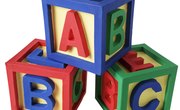Sixth-grade reading comprehension should be an experience in application. Any learning problems concerning reading fluency have hopefully been addressed. This is a skill that can still be worked on, but emphasis now needs to move to applying the strategies that will make your students truly understand what they are reading. Comprehension will become advanced as you guide them through the process of synthesizing, which involves thinking beyond the details of the text to reflecting on the topics that most affected them while they were reading, and what new information they have attained from what they have read. The steps below will help you improve reading comprehension during the year.
How to Improve Reading Comprehension in 6th Grade
Reinforce comprehension strategies. You should only need to review, model and practice reading strategies as needed. Most children should come into sixth grade with a working knowledge of basic concepts. You may need to clarify information on how to apply strategies because there are five (at least) to remember and students may get them confused. The main focus will be application of the following: predicting, questioning, summarizing, clarifying and synthesizing before, during and after reading the text.
Go from instructor to facilitator. Sixth grade is the time when students need to become active learners as much as possible. Instead of them depending on you to initiate learning, encourage them to do this by having them "think aloud." This is a great way to start a comprehension lesson.
Begin by giving them the strategy you want them to apply to a particular part of a text, which can be a story or a chapter from a book. If the strategy is synthesizing, ask them what was the most important thing they learned from what they read and why. Give them about 2 minutes to think about the answer, then pair with someone to compare ideas. You can assist as needed, but take on a passive role. Become more of a facilitator than the instructor.
Make your classroom reading-ready. As much as possible, make your classroom a place where students feel comfortable and can become part of a reading environment. A good way to do this is to set up a Reader's Workshop. This is a daily or sometimes weekly (at least three times) time when any kind of reading activity is encouraged. Prepare areas for silent reading, paired reading and listening centers (books on tape or CD). Ideally, there needs to be a separate area for writing about what's been read.
Tables with paper and pencils as well as dry-erase boards and posters need to be available for making graphic organizers. Children can rotate through the various areas on an alphabetical basis or any way of ordering that works for you. The important thing is that every child go through every area of the room to experience the complete process--from reading the book to writing about what's been read, then recording ideas and information about the text.
Make students responsible for what they learn. Sixth-grade students are now at an age when they can take responsibility for the accumulation of information they learn during the year and have it easily accessible. To get them into the habit of doing this as well as help them get organized, have them keep a portfolio during the year. This can be as simple as a two-pocket folder or elaborate as a 3-inch binder with dividers. The focus is to get them to track their own progress. One section should be a compilation of their writings like prediction charts, questioning diagrams and essays that summarized what they read. They should be kept in order by date, so the children can go back and see how to apply a strategy or just to see how their writing has improved.
Other possible sections could be graded papers with teacher feedback, assessment results and any free writing that was done during Reading Workshop. Allow students to decorate binders and display them if they want to so others can see their work. This gives them tangible evidence of what they have learned during the year.
Assess often. This is the only way to know if your children are comprehending. You can assess formally and informally. Formal assessments are usually story tests composed of multiple-choice questions about details and main topics of the story. Then there will be fill-in-the-blank questions in which the students have to complete the thought. There usually will be two or three open-ended, essay-type questions to which there are no wrong answers as long as reasonable comprehension is displayed.
For example, one of these questions may be, "Do you think that the main character did everything he should have to help his friend?" "If not, write about what else he could have done. If yes, discuss why you feel like he did everything he could." Questions like these require critical thinking, necessary not only for reading but for all subjects as a sixth-grader makes the transition into middle and high school.
Related Articles
Writer Bio
Karen Hollowell has been teaching since 1994. She has taught English/literature and social studies in grades 7-12 and taught kindergarten for nine years. She currently teaches fourth grade reading/language and social studies. Hollowell earned her Bachelor of Arts in English from the University of Mississippi and her Master of Arts in elementary education from Alcorn State University.










